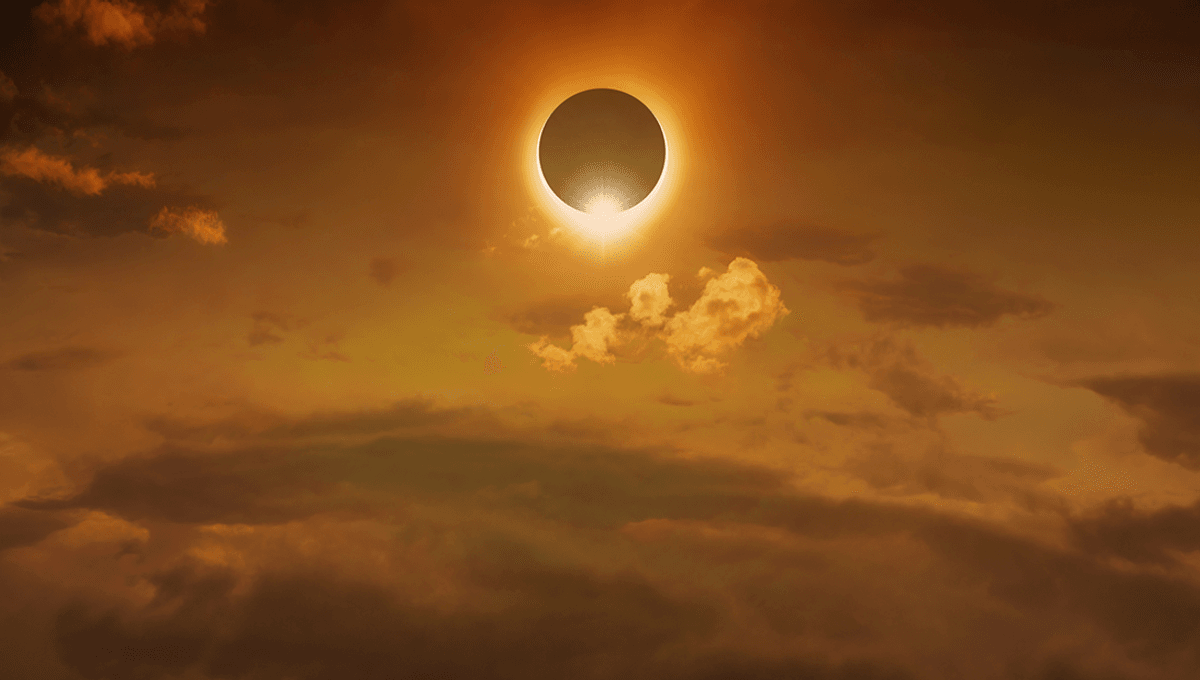
This is a pretty great year for gawping at celestial events. As well as a possible once-in-a-lifetime chance to see a nova, there is a total solar eclipse taking place across North America on Monday, April 8. While emergency officials warn that you should stock up on food, water, and fuel ahead of the eclipse, and follow guidelines on how to watch the eclipse safely, here’s a reason why you should savor the total eclipse even more: it is entirely a coincidence that they are as spectacular as they are.
The fact that our Moon currently eclipses the Sun in its entirety is a happy accident. The Sun and the Moon look about the same size in the sky as the Sun is about 400 times further away from the Earth than the Moon, and about 400 times bigger in diameter. This hasn’t been the case forever – four billion years ago, before the Moon drifted to its current orbit, it would have appeared about three times as big as now in the sky.
The Moon and Earth have been dancing around each other since the Moon’s origins 4.5 billion years ago, likely in a collision between planet Theia and Earth. But the orbits of these two bodies have changed over time. The Moon is getting further away from us, meaning one day, far in the future, humanity (or whatever evolves from dogs) will look up and see the last total solar eclipse.
We have an incredibly accurate idea of how fast the Moon is currently moving away from us, thanks to the Lunar Laser Ranging Experiment. The Apollo missions in the 1960s and ’70s placed reflectors on the surface of the Moon. By aiming lasers at the reflector and measuring the time it takes them to be reflected back at Earth, scientists determined the distance between the two points to within around 3 centimeters (1.2 inches). Taking repeated measurements showed us that the Moon is currently moving away from us at a rate of about 3.8 centimeters (1.5 inches) per year.
This hasn’t always been the case. If we take the current rate of recession and project it backward, the Moon collided with Earth about 1.5 billion years ago, which is awkward given that the Moon is 3 billion years older than that.
Instead, we can look at other evidence, such as layers placed down in rock and coral, which can provide estimates of the length of Earth days and the distance to the Moon at various points in history.
We can also make projections of what happens next as our orbits continue to evolve. This includes saying goodbye to the total solar eclipse.
“Over time, the number and frequency of total solar eclipses will decrease,” lunar scientist at NASA’s Goddard Space Flight Center Richard Vondrak said in 2017. “About 600 million years from now, Earth will experience the beauty and drama of a total solar eclipse for the last time.”
While the Moon will continue to drift, appearing smaller and smaller in the sky, it will never be free of our orbit. The Sun will become a red giant and engulf the Earth before we are properly separated from the Moon’s influence. We shall go down together.
All “explainer” articles are confirmed by fact checkers to be correct at time of publishing. Text, images, and links may be edited, removed, or added to at a later date to keep information current.
Source Link: The Cosmic Coincidence That Gives Us The Total Solar Eclipse